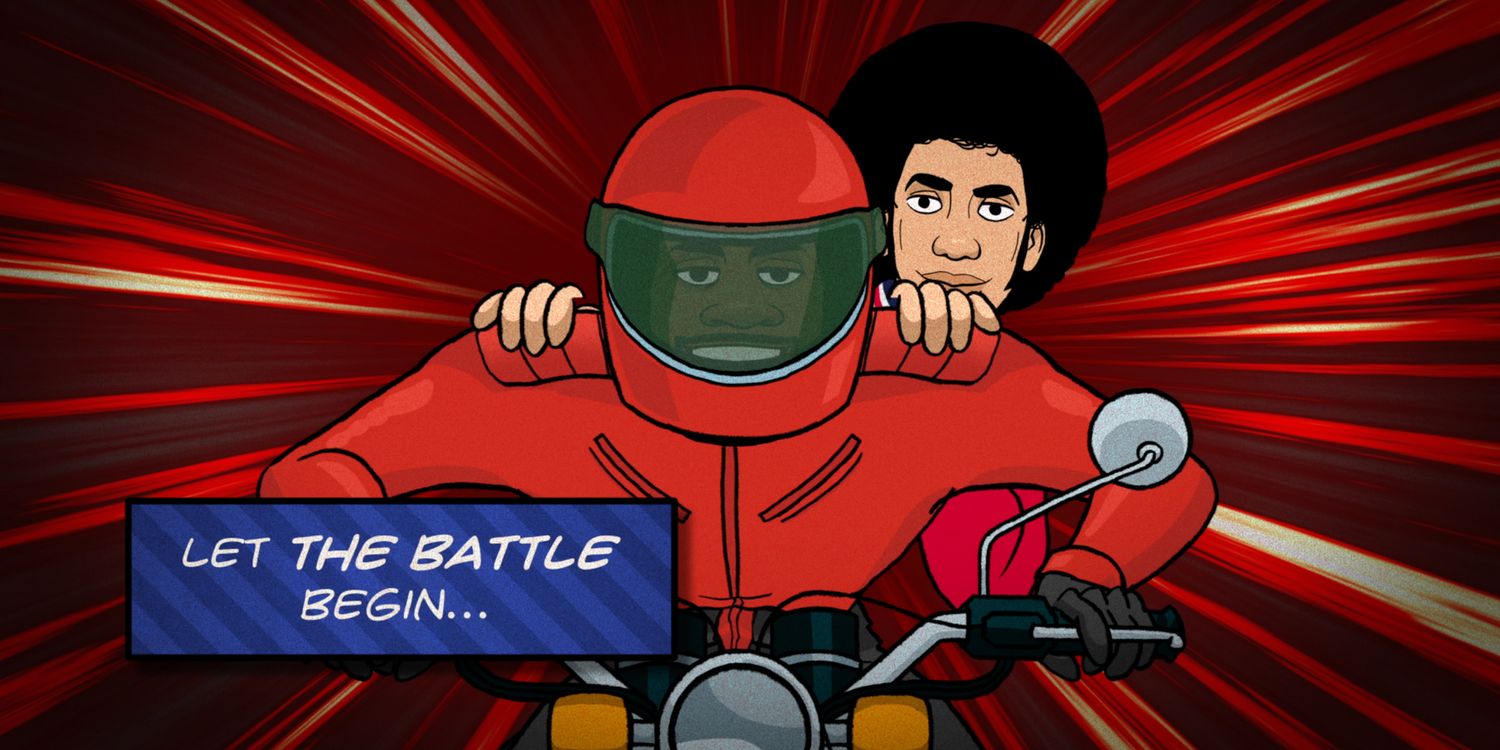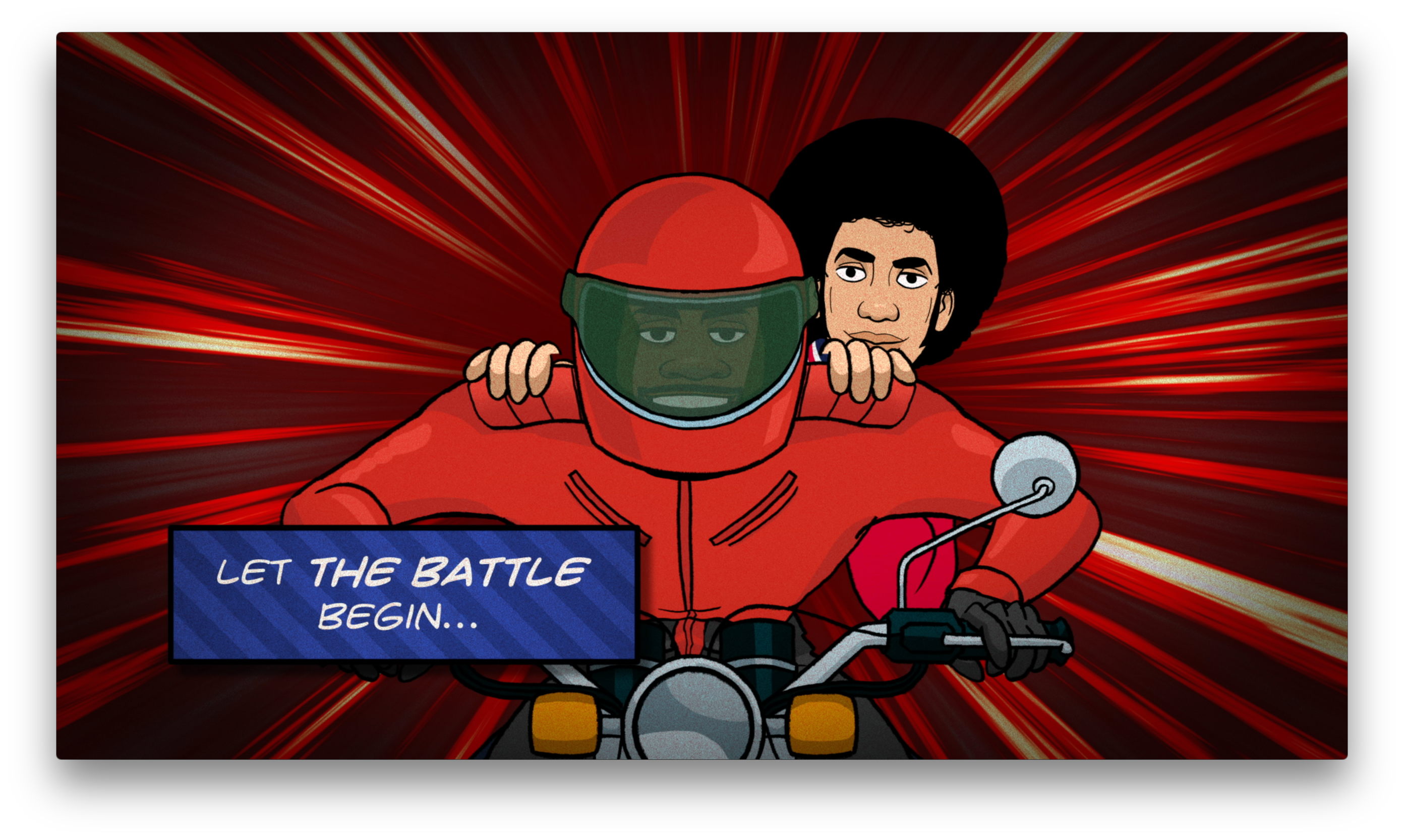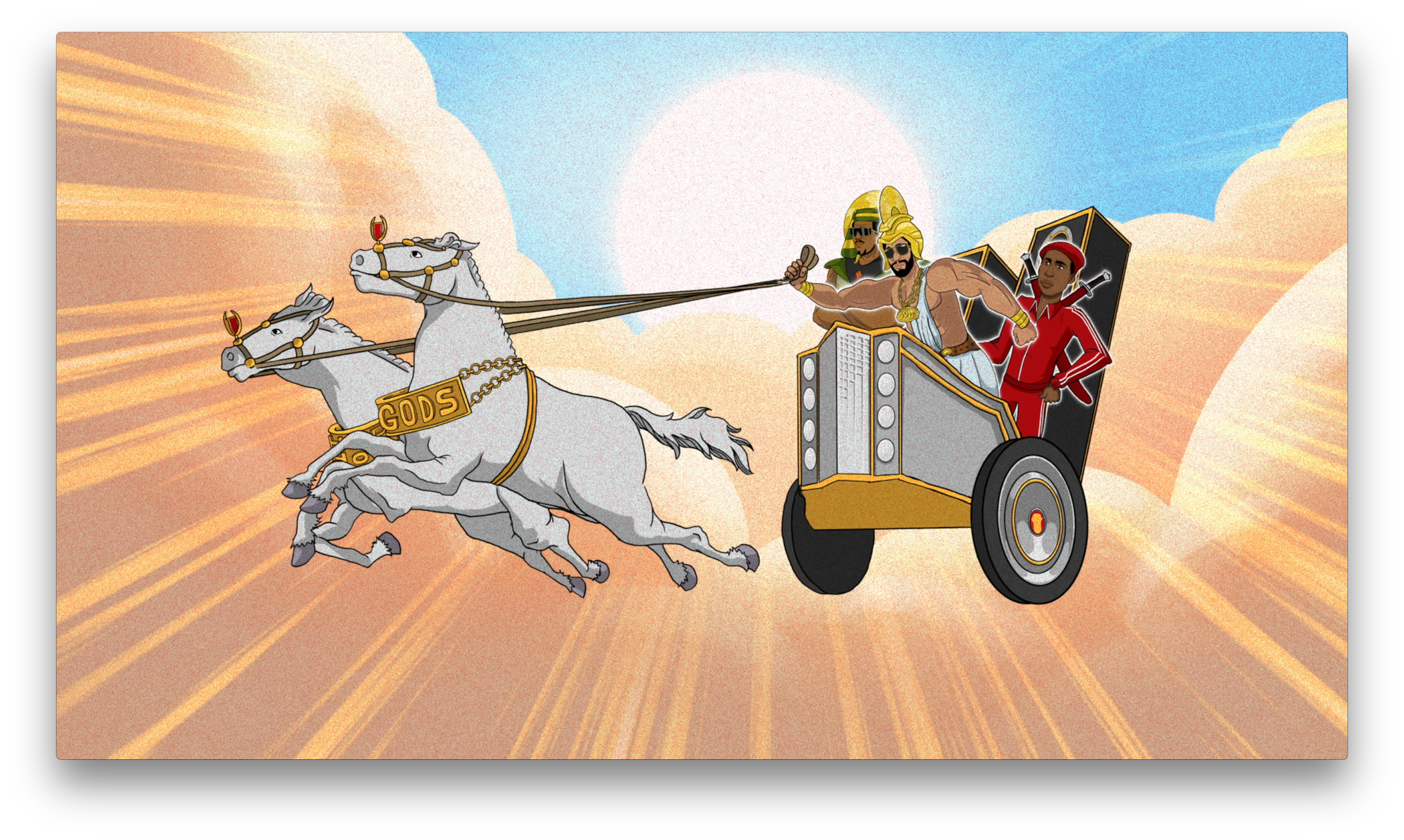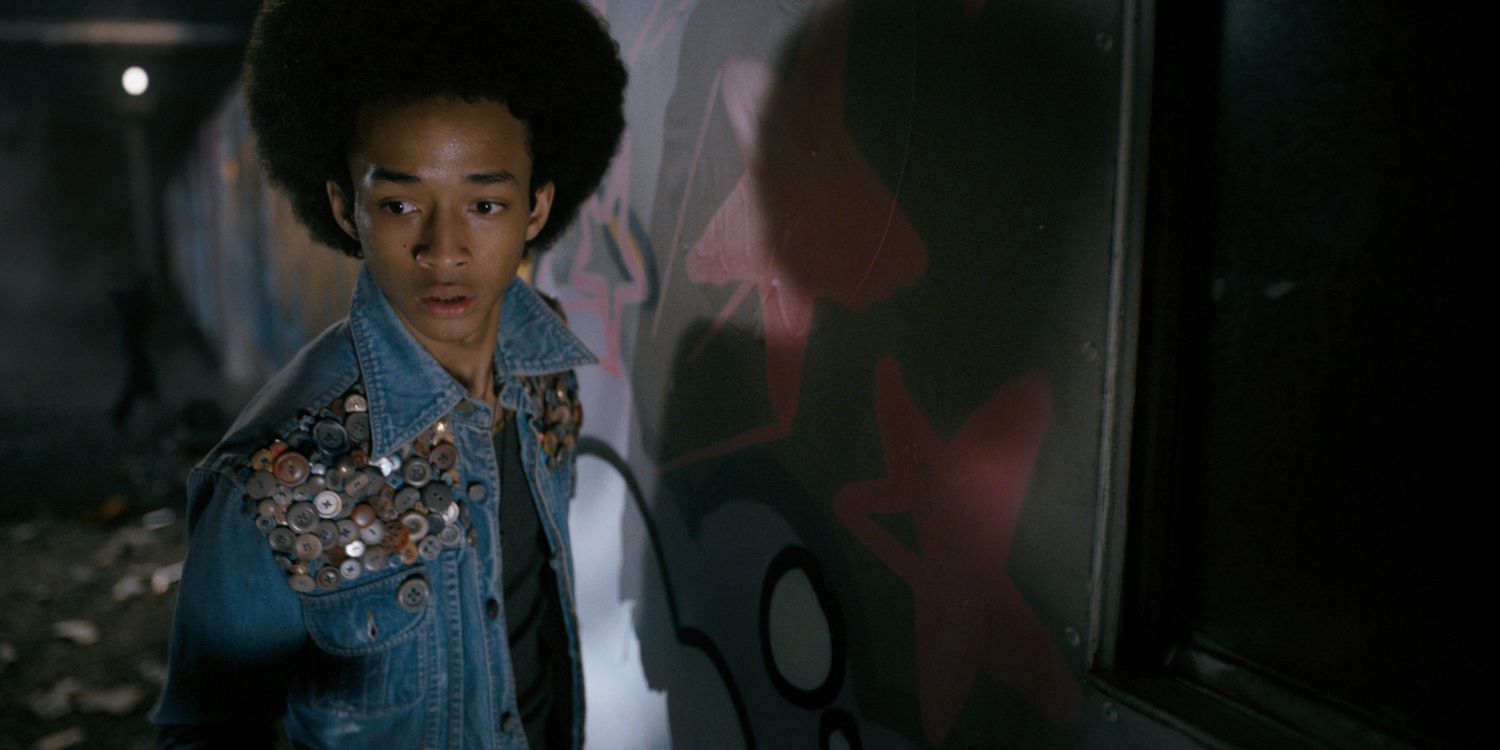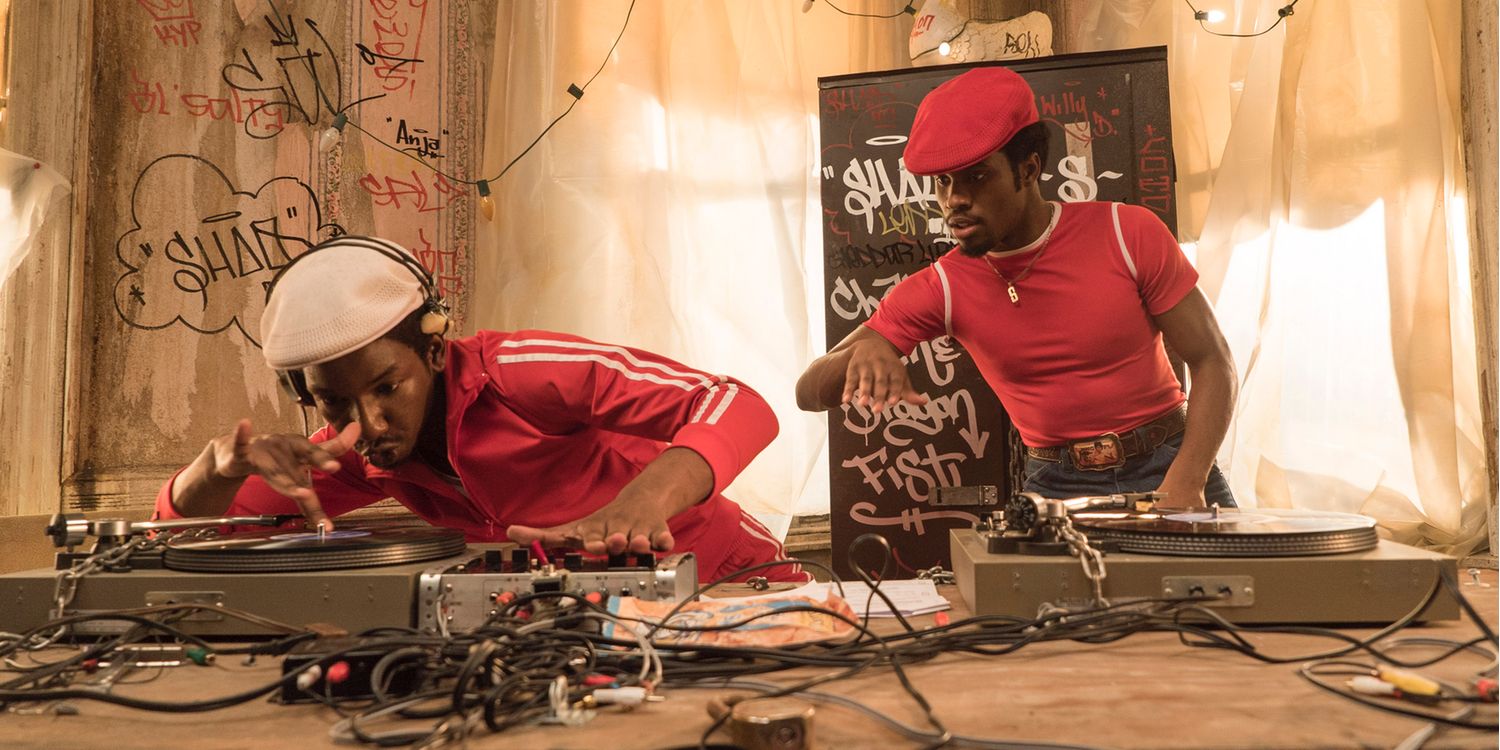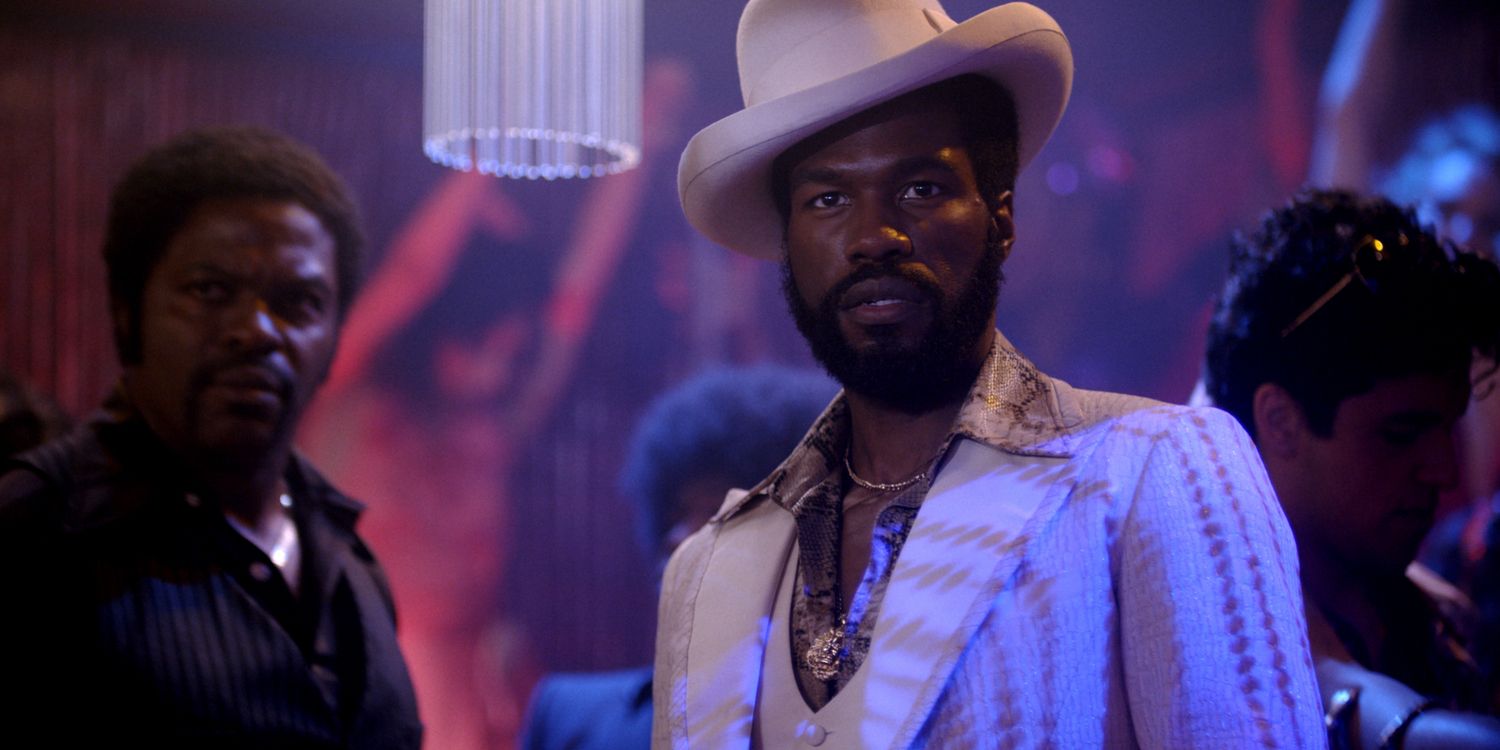Netflix's The Get Down recently returned to the streaming service with brand new episodes to finish out what is the series' first season. Hailing from creator and showrunner Baz Luhrmann, and replete with all his eye-catching, maximalist trimmings, the sort-of-musical period drama details the rise of hip-hop and the decline of disco through the eyes of a handful of charismatic young musicians and artists in the Bronx during the late '70s.
The core cast is made up of up-and-coming actors, like Justice Smith and Shameik Moore, both of whom have seen high-profile roles come their way since (Smith has a role in Jurassic World 2, while Moore will be the voice of Miles Morales in the upcoming Animated Spider-Man film). Other key roles are filled out by Herizen F. Guardiola, future Black Manta Yahya Abdul-Mateen II, and, of course, Jaden Smith, who plays the artistically minded Dizzee.
A tagger when the series begins, Dizzee brings a new focus to his artistic side in the most recent episodes by creating a comic book. His work is then transformed into a series of animated sequences that add an additional graphic storytelling component to an already visually impressive series, thanks in large part to the work done by artist and animator Mack Williams.
As a former animation director for FX's Archer, Williams is no stranger to bringing animated characters to TV, and he was nice enough to answer a few of Screen Rant's questions about his work on The Get Down, as well as share a few exclusive images from the series.
Tell me a little bit about how this project came about. Where did the idea of introducing animated sequences come from? How did you first get involved with The Get Down?
Exec producer Catherine Martin reached out to me after Baz saw a short I directed for Pitchfork a few years ago. I'm not sure how they actually came across that. It covered a lot of the same subject matter you see in The Get Down, just told from the point of view of GZA of the Wu-Tang Clan . I went in for a meeting with Baz and Catherine to discuss the logistics of introducing animation in the show. They showed me some really rough animatics they'd created, specifically for the boys running through the school to promote their show. We discussed the aesthetic they were looking for, referencing Ralph Bakshi, the old Jackson 5 cartoon, and Fat Albert. I think they were still a bit undecided about the whole animation thing, but after the meeting, it was like let's do this! It all came together incredibly quickly after that.
The sequences are essentially supposed to be the story of The Get Down seen through the eyes of Dizzee. Did the character in question have any impact on how you chose to approach those moments? If so, how?
100%. The animation sequences, for the most part, are all about Dizzee and his story, and how he sees this world. That was one of the primary things I discussed with Baz - how important Dizzee and Thor's relationship was to the show, and how we wanted to try and expand on that a bit. Obviously Jayden's performance as Dizzee is great, and it was important to us that we try to honor that performance and not let cartoon Dizzee be any less interesting than live action Dizzee.
What was the process of working with Baz Luhrmann like? Was there much back-and-forth between the two of you, or did you work primarily with the director of the episode?
Baz was really great to work with. I actually didn't work with the individual episode directors at all. The process was very unique, in my experience. Generally, we started each sequence with a very lose animatic that Baz created himself with his own storyboard artist and writers. In most other projects, we'd start with just a script, but this was so much more fleshed out. Baz gave us rough drawings of specific shots he was picturing, they added scratch VO for all the actors, etc. It was a big help, like starting the process two steps ahead. My storyboard team would take that animatic and re-create it in the style of our animation, paying close attention to the key shots Baz really wanted to use. We'd turn the handful of disconnected images he gave us into more of a story. From there, we'd go back and forth with Baz/Catherine a few times until we really had a solid storyboard sequence nailed down. Baz likes a lot of face time, so I made several trips to their office to meet in person and discuss the storyboards and animatics. Other than Baz, Taja Perkins, the post supervisor, was the person most heavily involved in the animation. She was fantastic to work with.
How much freedom did you have with regard to the style of animation and the designs of the characters?
We had a lot of freedom once we'd nailed down the look of the characters and backgrounds. Baz was very involved in the initial design process. We had some designers do several different versions of the characters, and showed those to Baz and his team. Baz picked specific elements from a couple of them, which we combined into a whole new set of designs approved for the series. Benji Williams did all the designs for the main characters. He's a really talented artist out of Los Angeles, and one of my favorite people to work with. The style of the animation was primarily driven by our production pipeline, which is After Effects based. It's somewhat unusual in the world of animation, but it allows us to do some really fun stuff faster and cheaper than traditional cell animation, which can take much longer. Throughout the process Baz was constantly pushing us to add our own touches to the animation and "surprise" him. He loved it any time we added anything extra cartoony or fun that wasn't part of the original plan.
In what way do you approach working on a series that is completely animated as opposed to animating segments of a series that is live-action?
Designing animation for The Get Down was much easier than designing a show from scratch, because so much of the show's aesthetic was set before we even got started. There was also an unbelievable amount of very meticulous research done on the visual identity of that era, and we had access to all of that. I remember specifically there was like a 30 page PDF just about the Writer's Bench, and all the graffiti artists who hung out there and what it was like, and tons of pictures. Stuff like that, that we didn't have to do ourselves. As far as the characters and the backgrounds, obviously, we want them to look like their live action counterparts, so we had tons of photos from set, continuity pictures of all the character's clothing that the wardrobe department took. Just an unbelievable amount of material to work with. Almost too much, honestly. We had a dropbox folder that was just dozens of reference images of everything imaginable. On a fully animated show, you have more freedom to do what you want, but you still have to come up with it and design it all. On The Get Down, a lot of that work was already done before we even started.
How did this project differ from work that you’ve done in the past? What was different about working on The Get Down than, say, working on a series like Archer?
This project was very different than anything I've done before in many ways, specifically the script/storyboard/animatic process, which I briefly detailed above. The actual process of animation wasn't all that different, though. We actually used a lot of artists who work/worked on Archer, because they're already familiar with the After Effects based pipeline that we use. The production schedule was greatly accelerated though, especially the pre-production. From my first meeting with Baz till turning in our final render was less than four months.
Aside from this series, what’s next for you? Can you talk about any upcoming projects you’ll be working on?
We have a few projects in development, but nothing I can discuss at the moment. Other than that, it's business as usual at Pig Apple. In addition to our cartoon work, we do loads of motion graphics and visual effects work, so that's our focus right now.
The Get Down season 1 can be seen in its entirety on Netflix. The animated sequences begin with episode 7 'Unfold Your Own Myth'. Check out more of Mack Williams' work below:

